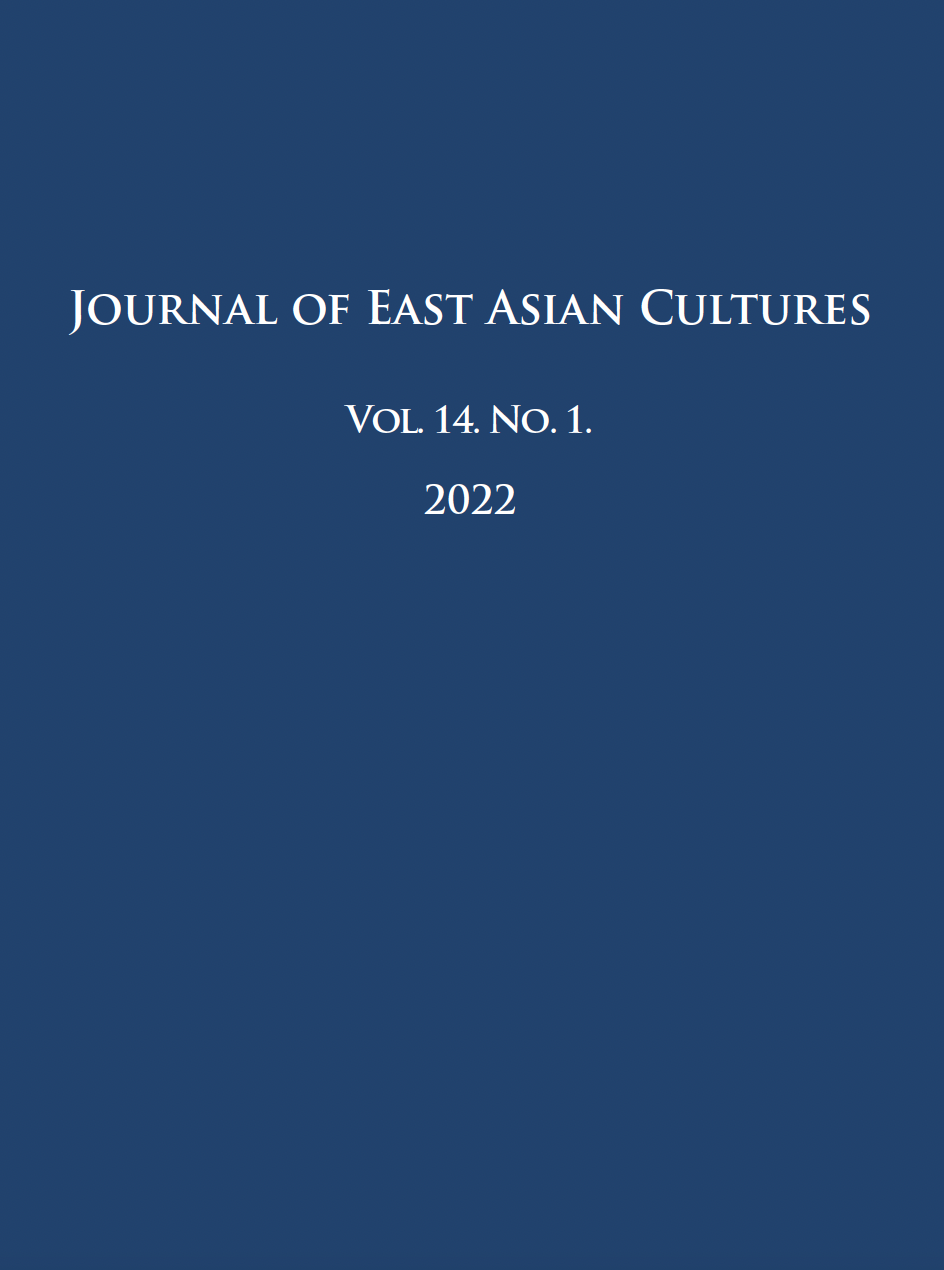Semantic Similarities and Differences of kong 空, ti 體, and li 理: A Case Study of the Treatise on Eighteen Kinds of Emptiness (Shiba kong lun 十八空論)
Published 2022-11-22
Keywords
- kong 空,
- ti 體,
- li 理,
- Treatise on Eighteen Kinds of Emptiness,
- Shiba kong lun 十八空 論
- Paramārtha,
- pudgala-dharma,
- daoli 道理,
- yong 用 ...More
How to Cite
Copyright (c) 2022 Gediminas Giedraitis

This work is licensed under a Creative Commons Attribution-NonCommercial 4.0 International License.
Abstract
This paper investigates the semantic similarities and differences between the notions of kong 空, ti 體, and li 理 in the Treatise on Eighteen Kinds of Emptiness (Shiba kong lun 十八空 論. The treatise is arguably authored by Paramārtha (Zhendi 真諦; 499–569), one of the most prominent translators and exegetes in the Chinese Buddhist tradition. This treatise is suitable for an investigation of the semantics of the above-mentioned terms, since it aims to explain Indic Buddhist concepts for a Chinese audience. This explanation is conducted by employing both Indian and Chinese concepts, such as persons-and-dharmas (Skt. *pudgala-dharma; Ch. renfa 人法) and the principle of the dao (daoli 道理). The explanation of various kinds of emptiness is presented through the Chinese hermeneutical framework of essence (ti 體) and function (yong 用) and altogether serves as a great example of how Indian Buddhist ideas were introduced into the Chinese philosophical landscape. An exegesis on the three terms conducted in the treatise provides readers with a highly nuanced and multi-layered picture of emptiness charged with both ontological and epistemological significance. In addition, the analysis on various aspects of emptiness is deeply connected to the Buddhist soteriological goal of nirvāṇa.
References
- Shiba kong lun 十八空論. T31, no. 1616.
- Garfield, Jay (trans.) 1995. The Fundamental Wisdom of the Middle Way Nagarjuna's Mulamadhyamakakarika. New York: Oxford University Press.
- Garfield Jay – Westerhoff, Jan 2015. “Introduction: Madhyamaka and Yogācāra: Allies or Rivals?”. Jay L. Garfield – Jan Westerhoff (eds.) Madhyamaka and Yogācāra: Allies or Rivals? New York: Oxford University Press. https://doi.org/10.1093/acprof:oso/9780190231286.001.0001
- Hamar, Imre 2017. A kínai buddhizmus története [The History of Chinese Buddhism]. Budapest: ELTE Konfuciusz Intézet.
- Keng, Ching – Radich, Michael 2019. “Paramārtha.” Brill's Encyclopedia of Buddhism. Volume II: Lives. Ed. by Jonathan A. Silk (editor-in chief), Richard Bowring, Vincent Eltschinger, and Michael Radich. Leiden: Brill, 752–758.
- Lamotte, Éttiene (trans.) 1976. Le Traite de la Grande Vertu de Sagesse, Vol IV, Louvain-la-Neuve: Institut Orientaliste. English tr. Gelongma Karma Migme Chodron (2001).
- Lusthaus, Dan 2002. Buddhist Phenomenology: A Philosophical Investigation of Yogacara Buddhism and the Ch'eng Wei-shih Lun. London: Routledge.
- Muller, A. Charles 2016. “The Emergence of Essence-Function (ti-yong) 體用 Hermeneutics in the Sinification of Indic Buddhism. An Overview.” Critical Review of Buddhist Studies 19: 111–152.
- Paul, Diana 1982. “The Life and Times of Paramārtha (499–569).” The Journal of International Association of Buddhist Studies 5 (ed. A. K. Narain), 39–69.
- Radich, Michael 2012. “External Evidence Relating to Works Ascribed to Paramārtha, with a Focus on Traditional Chinese Catalogues.” In Shintai sanzō kenkyū ronshū 真諦三藏研究論集 [Studies of the Works and Influence of Paramartha], ed. by Funayama Tōru 船山徹. Kyoto: Kyōto daigaku jinbun kagaku kenkyūjo/Institute for Research in Humanities, Kyoto University, 39–102[L].
- Salvini, Mattia 2015. “Language and Existence in Madhyamaka and Yogācāra. Preliminary Reflections”. In: Jay L. Garfield – Jan Westerhoff (eds.) Madhyamaka and Yogācāra: Allies or Rivals? New York: Oxford University Press. https://doi.org/10.1093/acprof:oso/9780190231286.003.0003
- Thakchöe, Sonam 2015. “Reification and Nihilism: The Three-Nature Theory and Its Implications”. In: Jay L. Garfield – Jan Westerhoff (eds.) Madhyamaka and Yogācāra: Allies or Rivals? New York: Oxford University Press. https://doi.org/10.1093/acprof:oso/9780190231286.003.0004
- Toru, Funayama 2006. “Masquerading as Translation: Examples of Chinese Lectures by Indian Scholar-Monks in the Six Dynasties Period.” Asia Major 19.1/2: 39–55.
- Ziporyn, Brook 2013. Beyond Oneness and Difference: Li and Coherence in Chinese Buddhist Thought and its Antecedents. New York: State University of New York Press.
- Zürcher, Erik 2007. The Buddhist Conquest of China. The Spread and Adaption of Buddhism in Early Medieval China (Third Edition). Leiden: Brill, 2007.

